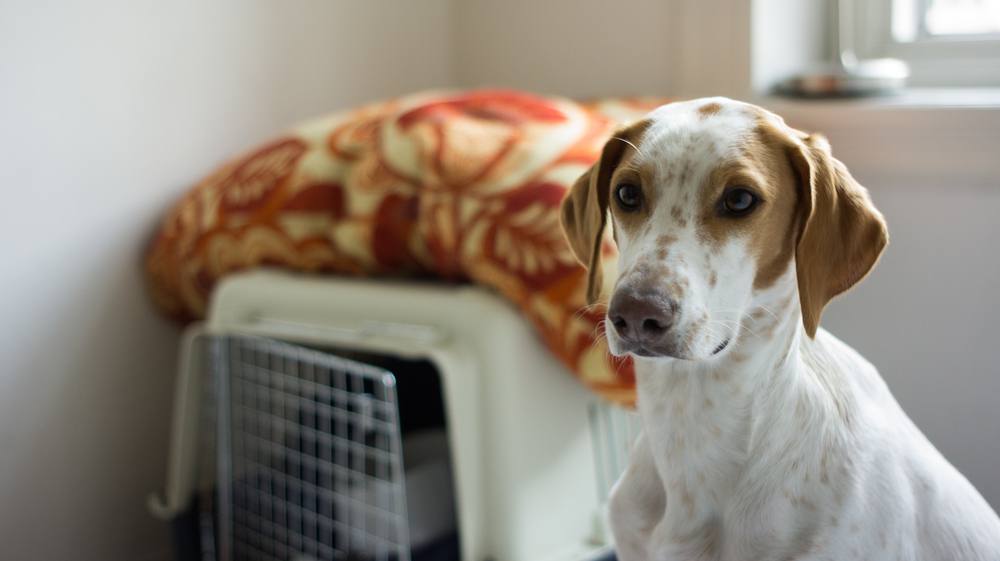Do Dogs Like Crates? Canine Preferences & Tips
By Jessica Kim
Updated on

Click to Skip Ahead
It’s a common belief in the United States that dogs have a natural denning instinct and can enjoy using a crate if they receive the proper crate training. However, when you dive deep into this topic, you’ll find that there are many supporters as well as opponents of crate training. So, there isn’t a clear-cut answer as to whether dogs like crates. Instead, it seems to depend on the dog as well as the way that the crate is used.
How Crate Training Became Popular
While crates are fairly popular in the US, it’s not as commonly used in other parts of the world. Crating became popular in the US because research conducted in the 1970s indicated that dogs have a denning instinct, just like wolves. This research turned out to be flawed, but the popularity of the denning instinct already took off and promoted the widespread use of crates.
Today, about a third of American dog owners use a crate, and crate training can be a highly effective tool to use in conjunction with potty training dogs. If a positive association with the crate is developed with the dog, the dog can enjoy being inside its crate.
So, it’s possible for dogs to like their crates. The gamechanger is how the human introduces and uses the crate. Proper use reinforces positive connections while improper use can spiral to inhumane conditions.

Proper Uses of Crates
The key to the proper use of crates is to ensure that the dog has a positive association and experience with its crate. Therefore, a crate should look and feel cozy and safe. It should include a comfortable mat or bed and some of the dog’s favorite toys and treats. Some dogs may also like having the crate partially covered to create a dim and secluded environment.
Crates can also help keep a dog safe while it’s housetraining. We can do our best to puppy-proof homes, but it doesn’t guarantee that a dog won’t snoop around and find something unsafe. So, a crate can protect dogs from ingesting harmful materials found in furniture, biting electrical wires, and interacting with other potentially hazardous items around the house while the owners aren’t home.
Crates can also contribute to less stress when a dog is traveling. The familiar environment of the crate can help keep dogs calm as the rest of their surroundings change unpredictably.
Improper Uses of Crates
Crates should never be used to conveniently keep dogs in a confined area. Most expert dog trainers don’t recommend keeping an adult dog in a crate for more than 8 hours. While some dogs may enjoy having their own designated space to go to, prolonged periods inside a crate aren’t appropriate and don’t create and reinforce a positive experience for them.
Crates also shouldn’t be used as a form of punishment. Again, crates should be a positive space for dogs and keeping a dog in a crate as punishment will only lead to more behavioral issues and problems for the relationship between the owner and dog.

Lastly, crates shouldn’t be used as a prolonged holding cell for puppies that are potty training. Puppies usually cannot hold their bladder for more than 4 hours at a time, and this period of time is even shorter for younger puppies under 6 months old.
The main purpose of using a crate during potty training isn’t to keep a puppy inside a space to prevent it from peeing on the floor. Rather, the crate should be used for short periods of time when owners can’t keep an eye on the puppy and give it their full attention.
Final Thoughts on Crating Dogs
Not all dogs need to be crate trained, and at the same time, the use of crates doesn’t have to be eliminated completely. The efficacy and ethics of crating a dog depend on how the crate is used.
If the dog is trained to understand that the crate is its personal safe space and home, it will enjoy being inside its crate. If the crate is merely used as a holding pen, there’s no reason for the dog to like it. At the end of the day, it’s up to the owner to create a positive experience for dogs and their crates.
Featured Image Credit: Noel V. Baebler, Shutterstock













